Bilateral capital physeal dysplasia in a ferret (Mustela putorius furo) treated with femoral head ostectomy
(2019)
Journal Article
Swaffield, M., Hedley, J., Stapleton, N., Priestnall, S. L., Suárez-Bonnet, A., & Baldrey, V. (2019). Bilateral capital physeal dysplasia in a ferret (Mustela putorius furo) treated with femoral head ostectomy. Journal of Exotic Pet Medicine, https://doi.org/10.1053/j.jepm.2019.05.003
A six-month-old male entire ferret presented for investigation of atraumatic bilateral pelvic limb lameness. Radiographic and subsequent histopathological assessment of the femoral heads following bilateral femoral head ostectomy was consistent with... Read More about Bilateral capital physeal dysplasia in a ferret (Mustela putorius furo) treated with femoral head ostectomy.
